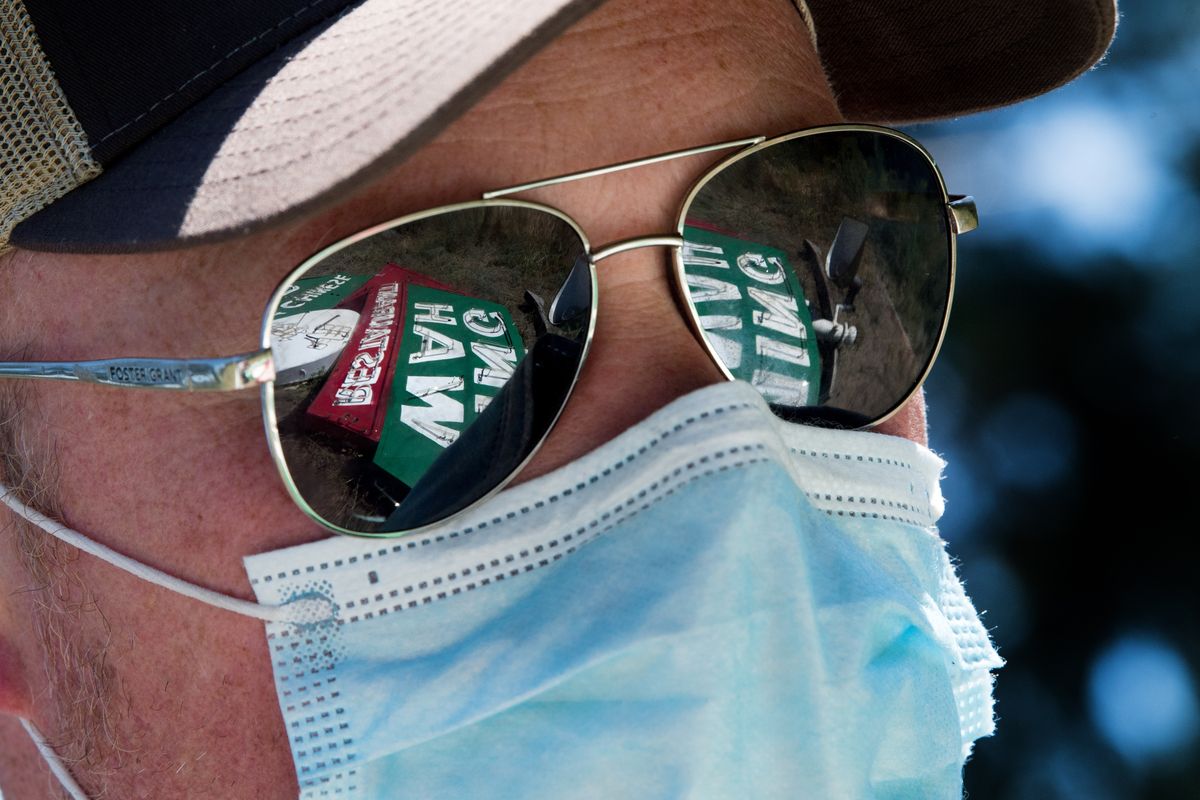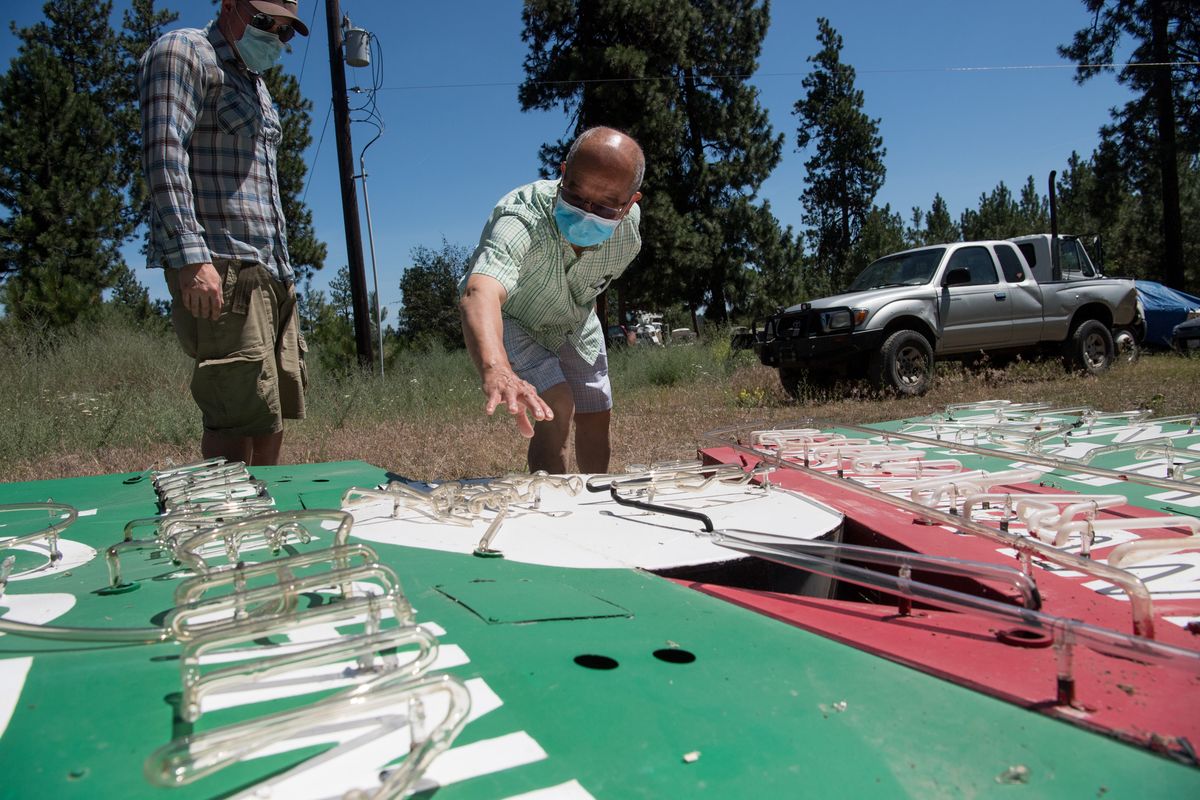Shawn Vestal: Chris Bovey helps to start fundraising effort to restore fallen Ming Wah sign

Since April, the glorious neon Ming Wah sign has been somewhere it was never meant to be: Lying flat on the ground, broken and unseen.
If you love that old sign, you can help put it back where it belongs: High above West Third Avenue near the railroad bridge, promising Chinese and American food to people in Spokane as it has for decades.

“This is a piece of good art,” said Kam Kwong, who has owned Ming Wah for almost 25 years. “I want the community to see the sign going back up in the sky.”
The trouble is that he can’t afford to fix and restore the sign, whose rusty, weakened support pole gave way at last during a windstorm. It would be expensive at any time – roughly $30,000, with insurance expected to cover a third to half the cost – but on top of that, Kwong has been closed since the start of the pandemic.
So he reached out to local artist Chris Bovey, who has made posters of the Ming Wah sign, among many other local landmarks.
“He said, ‘I can’t afford that. What can I do?’ ” Bovey said last week. “I said, ‘What if we did a GoFundMe?’ ”
It’s the first time using the now ubiquitous form of online fundraising for both Bovey and Kwong, but they’re hoping that enough other people in Spokane value that sign as much as they do. The sign dates back to the 1960s, Kwong believes, to the previous owners of the restaurant. It includes hand-painted lettering – with neon threaded over the letters – of the English and Chinese language renderings of Ming Wah, a large red sign that points, usually, to the pink restaurant building at 1618 W. Third.
In an age where old neon signs are disappearing, it is a rare Spokane artifact.
As Bovey puts it in the intro on the GoFundMe page: “Neon tells a tale of a simpler time in Spokane. When you would travel down Riverside and see the glitter and glitz of a bustling metropolis alongside street car trolleys. Sadly, these historic neon signs are all disappearing from the skyline and being replaced by signs with no personality.”
Bovey is donating stickers and T-shirts for donors at certain levels.
Kwong moved to America as a teenager with his parents from Hong Kong in 1967, and lived around the West, where his relatives run restaurants in several cities, before coming to Spokane about a quarter-century ago. Ming Wah has developed a devoted following for its Cantonese dishes with American adjustments, like his most popular dish – a deluxe chow mein spilling over with ingredients.
“I have a lot of loyal customers,” he said. “I get calls almost every day. When are you open? When are you open?”
Kwong has stayed closed since the pandemic arrived, saying, “Everybody’s health is more important than a few dollars.”
He’s planning to open around the end of the month for takeout, but intends to wait until the coronavirus abates further before returning to dine-in operations.
He feels lucky the sign, which is very large and heavy, fell at night and didn’t hurt any people or property. At first, he assumed it would be a matter of a few thousand dollars to put it back in place, but the first bid he got was $67,000.
He reached out to Bovey, who’s been a longtime fan and supporter of the restaurant. A version of the Ming Wah sign was one of the first images in Bovey’s print-making project, in which he has created stylish prints of hundreds of iconic Spokane places and businesses; that print hangs, framed, in the restaurant today.
The Ming Wah was also the site of Bovey’s first date with his wife.
They were able to get a much lower bid for the restoration work, but the price is still out of reach for Kwong. The sign has been moved to a property near Palisades Park, where it now lies on the ground. Seeing it up close is even more impressive that seeing it up high – you can see the detail work, the intricate neon, the vast size of the thing.
“You can still see the brush stroke,” Bovey said. “The whole thing is hand-painted. It’s a piece of artwork like you don’t see anymore.”
The name of the restaurant is hard to translate directly into English – the symbol for Ming is a combination of the sun and the moon, meaning to produce a great light; and Wah indicates the Cantonese or Chinese people, Kwong said. The overall translation, roughly, is “a bright future for the Orient, or for Cantonese or Chinese people.”
He’s hoping there’s a bright future for the sign, as well.